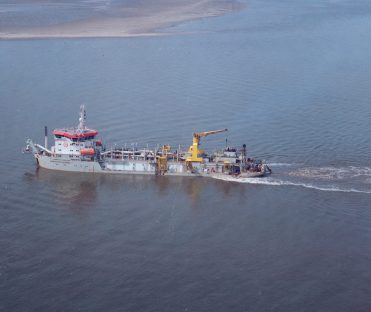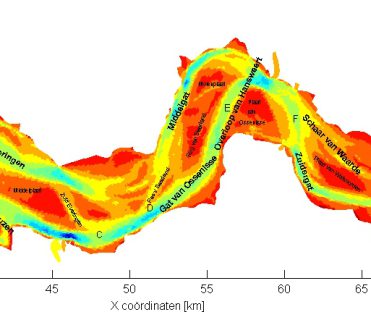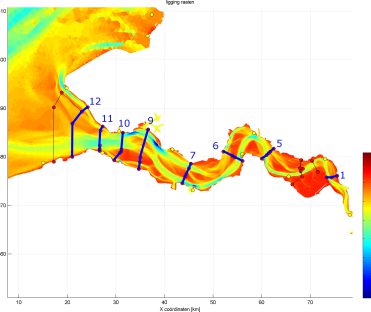Morphological research Western Scheldt Estuary
DOWNLOAD PROJECT SHEET
FINEL Morphological simulations

NVZ (Dutch association of sand miners)

Western Scheldt, the Netherlands

2009
Influence of sand mining
Following the decision by the Dutch Ministry of Transport, Public Works and Water Management to phase out sand mining in the Western Scheldt estuary, the Dutch association of sand miners (NVZ) commissioned Svašek Hydraulics to investigate the arguments behind this termination.
Svašek’s morphological Western Scheldt FINEL estuary model, which has been used before in numerous projects, is applied here to simulate import and export of sand. The model showed a sand balance in the estuary which, despite having some deviations from reality in the absolute sense, presented trends which are very similar to those observed in the actual Western Scheldt.
Simulations of the situation in the years 1964 and 2001 showed that relative differences between the simulations match actual differences in the sand balance between those years.
Using the tested model, Svašek investigated the influence of several human activities, including sand mining and different strategies on fairway maintenance, on the import and export of sand along the Western Scheldt estuary.
The figure below shows the sensitivity of the sediment import/export for various scenarios, relative to the scenario without any human activity.
Compared to the effects of the investigated dumping strategies the sand mining only showed a small effect on total sand transports. In the east of the estuary, where sand mining is mainly carried out, sand mining leads to an increase in import of sand.
It can thus be concluded that the arguments for phasing out sand mining, most notably a perceived negative effect on sand import, have been shown to be without merit.
© Photo Beeldbank RWS.
Ype Attema
Lead expert morphodynamics

MORE INFORMATION ABOUT SVAŠEK OR OUR EXPERTISES?
Please contact us or make an appointment.
CONTACT US



